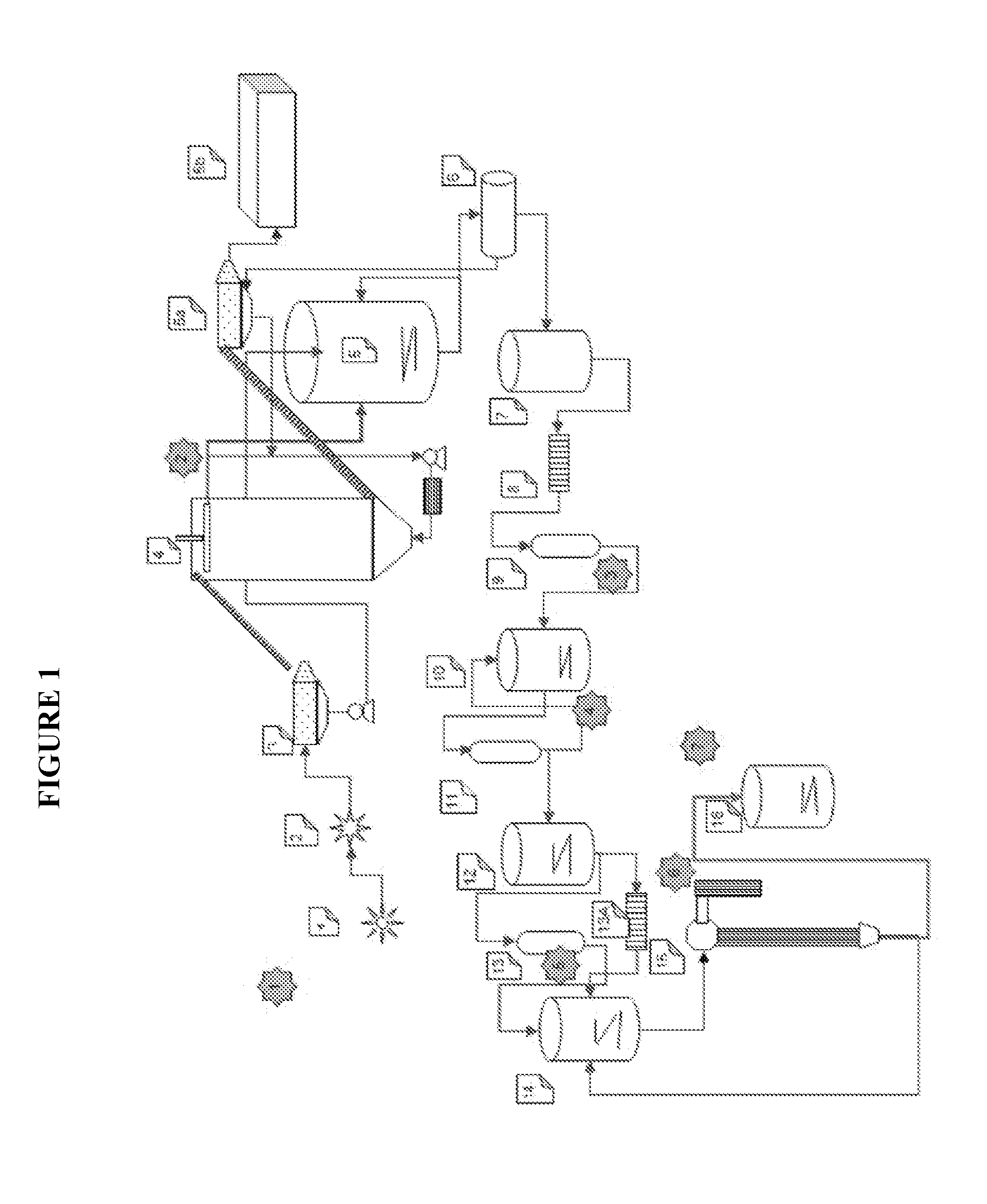Stable solid form agave sweeteners and methods for manufacture thereof
a solid-state agave and sweetener technology, applied in the field of sweeteners, can solve the problems of high glycemic index and glycemic load, high glycemic load, and high glycemic load, and achieve the effects of high blood pressure, increased triglycerides and cholesterol, and abnormal blood lipid profil
- Summary
- Abstract
- Description
- Claims
- Application Information
AI Technical Summary
Benefits of technology
Problems solved by technology
Method used
Image
Examples
example 1
Preparation of Agave Nectar from Raw Agave
[0067]The steps illustrated in the schematic shown in FIG. 1, describe the industrial scale production of agave nectar from raw agave root bulbs. The various stages of the process are described in terms of the equipment used at a particular stage of the process.
TABLE 1No.Process equipment descriptionCapacityParameters 1Raw Agave Ripper7,000Kg / Hr 2Hammer mill7,000Kg / Hr 3Expeller1,500Kg / Hr 4Ripped agave digestor20,000Liter 5Juice Sterilization tank12,000Liter 5aExpeller to exhaust ripped agave1,500Kg / Hr 5bHopper for agave bagasse3,000Liter 6Rotary sifter to filter heavy solids1,500L / hr 7Tank for prefiltered juice12,000Liter 8duplex type filter press5gpm 9Active carbon filters5gpm(I micron filtration)10Enzymatic reactors or Hydrolysis12,000Liter11Ultra filtration System6gpm12Unfolded juice tank12,000Liter13Nanofiltration System6gpm13astainless steel filter press to clarify6gpmjuices14Evaporator feeding tanks12,000Liter15Evaporator1,200Kg / hr wa...
example 2
Crystallization of Agave Nectar by Lyophilization
[0068]The process of crystallization of the agave nectar involves changes in temperature, pressure and moisture throughout time, and optionally inoculating with maltodextrin, dextrose or any other hygroscopic compound to a lyophilizer.
[0069]During lyophilization, the syrup is entered into the chamber in large plates, where a hygroscopic compound (such as maltodextrin, dextrose or any solid sugar from sugarcane, sugar beets or sweet potato) is inoculated in order to provide a first crystal to which syrup crystals will attach.
[0070]Inside the chamber, temperature is lowered to −50° C. and pressure dropped to 10 microns.
[0071]After that, crystals start forming due to the sublimation of the water in the syrup, going from ice to vapor instantly and leaving the crystals on the plates.
[0072]From there, the hygroscopic compound stabilizes the crystals and prevents them from reabsorbing humidity as the temperature rises above 0° C. and the pre...
PUM
 Login to View More
Login to View More Abstract
Description
Claims
Application Information
 Login to View More
Login to View More - R&D
- Intellectual Property
- Life Sciences
- Materials
- Tech Scout
- Unparalleled Data Quality
- Higher Quality Content
- 60% Fewer Hallucinations
Browse by: Latest US Patents, China's latest patents, Technical Efficacy Thesaurus, Application Domain, Technology Topic, Popular Technical Reports.
© 2025 PatSnap. All rights reserved.Legal|Privacy policy|Modern Slavery Act Transparency Statement|Sitemap|About US| Contact US: help@patsnap.com

